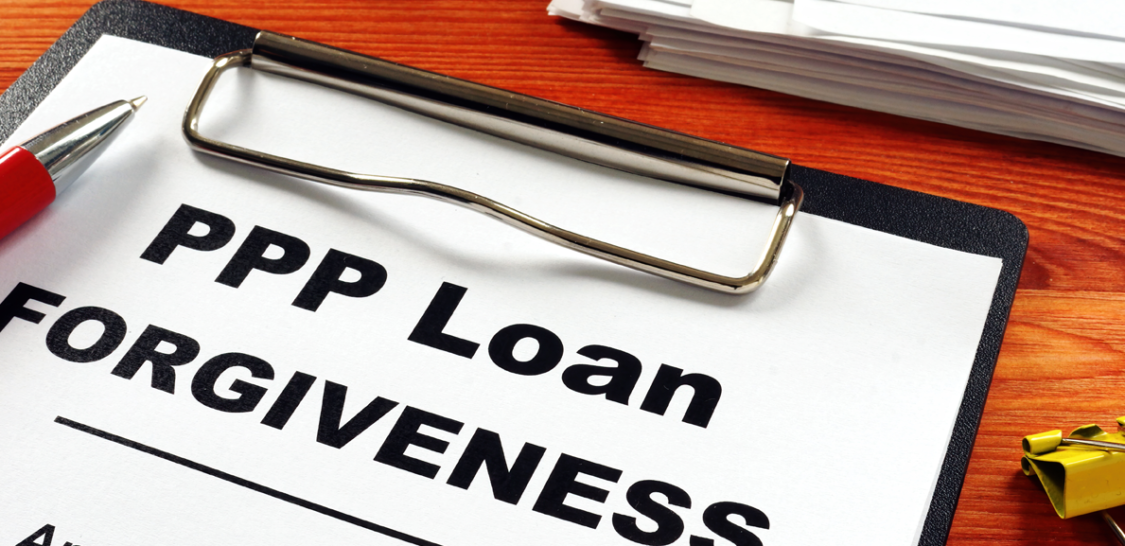The Coronavirus Response and Relief Supplemental Appropriations Act introduces a number of economic relief provisions, the largest of which being a new funding opportunity for the Paycheck Protection Program (PPP). The Act also clarifies outstanding issues from the first round of PPP, most notably the question of tax deductibility for forgiven PPP expenses. Read on for an overview of this topic and other big takeaways from the Act regarding PPP round one.
Tax Deductibility of Forgiven PPP Expenses Confirmed
Recipients of PPP loans from the CARES Act (round one) who received forgiveness are now able to deduct the forgivable costs covered by the loans on their federal tax returns. The new Act clarifies that gross income does not include any amount that would otherwise arise from the forgiveness of a PPP loan. It also clarifies that deductions are allowed for otherwise deductible expenses paid with the proceeds of a PPP loan that is forgiven, and that the tax basis and other attributes of the borrower’s assets will not be reduced because of the loan forgiveness. These rules are effective as of the date of enactment of the CARES Act and provide similar treatment for PPP round two loans, effective for tax years ending after the date of enactment of the provision.
More Forgivable Expenditures Added
For loans not already forgiven from round one, additional expenses can be utilized for forgiveness purposes. These include:
- Covered operations expenditures: Payments for any business software or cloud computing service that facilitates business operations, product or service delivery, the processing, payment, or tracking of payroll expenses, human resources, sales and billing functions, or accounting or tracking of supplies, inventory, records and expenses.
- Covered property damage costs: Costs related to property damage and vandalism or looting due to public disturbances that occurred during 2020 that was not covered by insurance or other compensation
- Covered supplier costs: Expenditures made by a borrower to a supplier of goods for the supply of goods that—(A) are essential to the operations of the borrower at the time at which the expenditure is made; and (B) is made pursuant to a contract, order, or purchase order—(i) in effect at any time before the covered period with respect to the applicable covered loan; or (ii) with respect to perishable goods, in effect before or at any time during the covered period with respect to the applicable covered loan
- Covered worker protection expenditures: Operating or capital expenditures to facilitate the adaptation of the business activities of an entity to comply with requirements established or guidance issued by the Department of Health and Human Services, the Centers for Disease Control, or the Occupational Safety and Health Administration, or any equivalent requirements established or guidance issued by a State or local government, during the period beginning on March 1, 2020 and ending the date on which the national emergency with respect to the COVID-19 expires related to the maintenance of standards for sanitation, social distancing, or any other worker or customer safety requirement related to COVID-19, which may include:
- Purchase, maintenance, or renovation of assets that create or expand—(I) a drive-through window facility; (II) an indoor, outdoor, or combined air or air pressure ventilation or filtration system; (III) a physical barrier such as a sneeze guard; (IV) an expansion of additional indoor, outdoor, or combined business space; (V) an onsite or offsite health screening capability; or (VI) other assets relating to the compliance with the requirements or guidance described;
- Purchase of (I) covered materials described in section 328.103(a) of title 44, Code of Federal Regulations, or any successor regulation; (II) particulate filtering facepiece respirators approved by the National Institute for Occupational Safety and Health, including those approved only for emergency use authorization; or (III) other kinds of personal protective equipment.
The Act also clarified that other employer-provided group insurance benefits are included in forgivable payroll costs, including group life, disability, vision or dental insurance.
EIDL Advance Forgiveness
The new Act repealed the CARES Act provision requiring SBA to deduct EIDL (Economic Injury Disaster Loan) advance amounts received by borrowers from the forgiveness payment amounts remitted by SBA to the lender. For PPP loans not yet forgiven, the EIDL advance will not be deducted from forgiveness. For PPP loans already forgiven, the EIDL advance that was deducted from forgiveness will be paid back with interest to the lender for the borrower to be reimbursed/made whole.
Simplified Forgiveness Process for Loans under $150,000
Borrowers who received less than $150,000 in PPP loans during the first round or for a second draw will now only have to submit a simplified, one-page application for forgiveness. A borrower shall receive forgiveness if a borrower signs and submits to the lender a certification that is not more than one page in length, includes a description of the number of employees the borrower was able to retain because of the covered loan, the estimated total amount of the loan spent on payroll costs and the total loan amount. The borrower must also attest that the borrower accurately provided the required certification and complied with PPP loan requirements. Borrowers are required to retain relevant records related to employment for four years and other records for three years. The SBA may review and audit these loans to ensure against fraud.
Questions about these provisions or other details? Read our overview of PPP round two and contact your RKL advisor to discuss specific circumstances.




